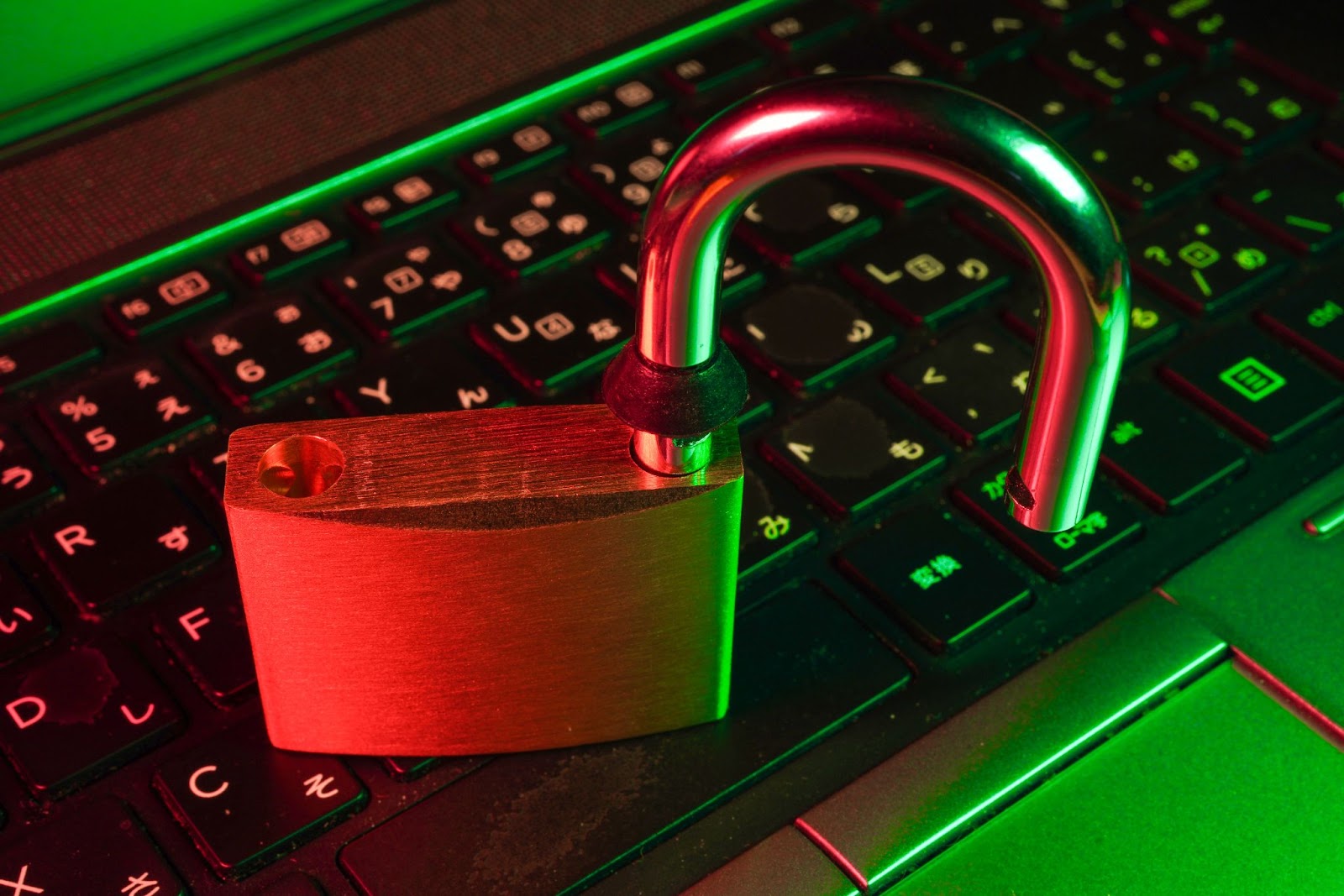What To Do if Your Credit Card Is Hacked and How To Regain Control Fast
According to a Security.org survey, over 63% of U.S. payment card holders have faced unauthorized charges, and more than half have experienced it more than once[1]. However, the consequences of credit card hacks can go beyond a few disputed transactions.
A hacked credit card is often part of a broader identity theft scheme. Using your stolen card information, a criminal may also try to open new accounts in your name, affecting your credit score and accumulating debt. That’s why acting quickly is essential—not just to resolve the charge, but also to protect your financial identity.
This guide explains what to do if your credit card is hacked and what signs of compromise to look for in the first place. You’ll also learn how virtual cards keep your real payment information safe even if your virtual card number is exposed in a breach.
How To Check if Your Credit Card Has Been Hacked

Spotting these early signs of a credit card hack can help you act fast and reduce the risk of further misuse:
- Unfamiliar charges in your account statement—Even a $1 or $2 transaction you don’t recognize could be a test charge before a larger purchase.
- A burst of charges in a short time—Multiple purchases or ATM withdrawals made in rapid succession may signal credit card fraud.
- Purchases from locations you haven’t visited—If you’re in one location but see charges from another city or even another country, someone else may be using your card.
- Spending that doesn’t match your habits—A sudden high-end purchase on a card you normally use for groceries or subscriptions could trigger a fraud alert.
- Missing statements or changes to your contact info—If the contact details on your credit card account (like your address, phone, or email) are changed without your knowledge, it could be a sign that a hacker is trying to hide fraudulent activity.
- Declined transactions without reason—A denied credit card transaction may indicate your card has already been flagged for suspicious activity by your bank.
- Unexpected card replacements—Receiving a new card you didn’t request is a clear sign someone is opening new lines of credit in your name.
- Fraud alerts from your bank—If your bank’s fraud team contacts you about unusual activity on your card, it’s a sign that your card may have been compromised.
Are You Liable for Fraudulent Credit Card Charges?

The Fair Credit Billing Act (FCBA) offers strong protections that limit your financial responsibility in case of unauthorized credit card use. The table below highlights how your maximum liability is determined based on when the incident is reported[2]:
Card issuers like Visa[3] and Mastercard[4] offer zero-liability protection for any fraudulent charges, provided the fraud was reported promptly and wasn’t a result of your negligence (e.g., sharing your PIN or leaving your card unattended).
Additionally, even if someone hacked your credit cards with a balance, you aren’t responsible for the unauthorized charges under investigation[5]. However, you’re still expected to pay any legitimate charges you made, including any interest or fees tied to those amounts.
Steps To Take if You’re a Victim of a Credit Card Hack
If your credit card details have been compromised, follow these steps to protect your information and resolve the issue as soon as possible:
- Dispute the unauthorized charge with your bank
- Freeze your credit report
- Lock your card immediately
- Review and secure your linked accounts
- Place a fraud alert on your credit report
- File a report with government agencies
Dispute the Unauthorized Charge With Your Bank
When you dispute an unauthorized credit card charge with your issuing bank, here’s how the fraud investigation process typically goes:
- After you notify your bank about the suspicious transaction and provide supporting documentation—such as screenshots, emails, and account statements—the issuer may apply a provisional credit to your account during the investigation.
- The bank examines the disputed charge, often by reviewing internal fraud detection data and reaching out to the merchant. In more serious cases, payment networks, credit bureaus, or law enforcement may also be involved.
- If the bank confirms the charge was unauthorized, it may recover the funds through a chargeback to the merchant or reimburse the account directly. For low-value disputes, the issuer may write off the loss without pursuing recovery.
Freeze Your Credit Report
If your card details were stolen as part of a broader data breach or identity theft scheme, placing a security freeze on your credit file can help prevent further misuse. The freeze restricts access to your report, so lenders can’t run credit checks to open new accounts in your name.
Even if someone has your Social Security number (SSN), address, and other personal information, most creditors won’t proceed with the request until you lift the restriction yourself.
Here’s how to freeze your credit report:
- Request a freeze from the three major credit bureaus: Equifax, Experian, and TransUnion. You can do this online or by phone.
- Set a PIN or password to temporarily lift the freeze whenever you need to apply for new credit.
Lock Your Card Immediately
Most banks let you temporarily disable your card through their app or website. If you can’t reach your issuer by phone right away, use the app to block new transactions and follow up with a call soon after.

In most cases, the bank will cancel the compromised card and send you a replacement. If it doesn’t automatically issue a new card, you can request one on your own to avoid further unauthorized charges. Your bank may also offer a digital card number you can use while you wait for the physical card to arrive.
Review and Secure Your Linked Accounts
If the hacked card was linked to autopayments for expenses like subscription services, utility bills, or streaming accounts, update those payments with your new card details. This helps avoid disruptions and ensures your compromised information isn’t used again.
Next, review your bank accounts and any digital wallets (like PayPal or Apple Pay) for unfamiliar activity. If anything looks suspicious, change the passwords on these accounts.
Place a Fraud Alert on Your Credit Report
Placing a fraud alert adds an extra layer of protection against identity theft in case your credit card is hacked. It enables creditors to take additional steps to verify your identity, which makes it harder for hackers to open new accounts in your name.
Contact any of the three major credit bureaus to place a fraud alert online or by phone. Once your request is processed, the bureau will notify the other two to make sure the alert appears on all your credit reports. A standard fraud alert lasts one year and can be renewed annually at no cost.
File a Report With Government Agencies
Reporting the incident to the appropriate government agencies can help reinforce your legal protections and support your identity theft recovery. While these agencies typically don’t investigate individual cases, your report serves as official documentation of the incident and triggers the recovery process.
You can submit an identity theft report to the FTC. If your credit card was compromised through an online scam—such as a phishing email, fake website, or known data breach—you can also file a complaint with the FBI’s Internet Crime Complaint Center to help authorities track broader fraud patterns.
Protecting Your Credit Card From Future Threats
While you can take steps to recover the damage and secure your information after a credit card hack, this doesn’t always stop future fraud attempts. Fraudsters continue to use increasingly sophisticated methods, from skimming devices to SIM swap scams, many of which are hard to detect.
Plus, even with the legal protections, the process of disputing credit card fraud can be stressful and time-consuming. In some cases, banks may not rule in your favor, especially if the fraud is hard to prove or looks like a legitimate transaction.

That’s why you should prioritize fraud prevention options like virtual cards, which can offer an added layer of protection. Instead of sharing your actual payment details, you can use a virtual card number that’s tied to your account but is easily paused, deleted, or replaced if compromised, without affecting your physical card.
While some banks, like Citi and Capital One, offer virtual cards, they typically require you to have an account with them. Using a dedicated provider like Privacy gives you access to powerful card controls and added convenience, without needing to open a new bank account.
Hide Your Real Card Info With Privacy Virtual Cards
With unique 16-digit numbers, expiration dates, and security codes, Privacy Cards work just like physical cards to make your purchases seamless. You can use them with most merchants that accept Mastercard® or Visa® payment cards.
Privacy is PCI-DSS-compliant, meeting the same security standards as top financial institutions. It offers the following security features to safeguard your payment data:
- Two-factor authentication (2FA)—Privacy adds an extra verification step when logging in to your account. This helps block unauthorized access, even if your card details are compromised.
- End-to-end encryption—Privacy uses AES-256 encryption to secure your stored sensitive data and Transport Layer Security (TLS) to secure the data in transit. Also, Privacy never stores your bank login credentials.
- Fraud protection—If an unauthorized charge happens, Privacy investigates it and helps you dispute it quickly if there are grounds for it.
Types of Virtual Cards You Can Generate With Privacy
Privacy allows you to generate four types of virtual cards:
Privacy makes it easy to stay on top of your spending by letting you set custom limits on each virtual card. This helps you avoid overcharges, whether you’re sharing a card or managing recurring subscriptions.
You can also pause a card temporarily or close it permanently, which is especially useful for stopping unwelcome subscription payments.
Additional Features of Privacy
Privacy also offers a variety of tools that simplify the way you use and manage your virtual cards, including:
- Browser extension—Available for Chrome, Firefox, Edge, and Safari (or Safari for iOS), the Privacy Browser Extension speeds up checkout by auto-filling card details or generating new cards on the spot.
- Mobile app—The Privacy App lets you create and manage virtual cards, track spending, and receive real-time alerts from your iOS or Android device.
- 1Password Integration—You can securely store and manage your virtual card details and credentials from the 1Password dashboard.
- Card Notes—You can add custom notes to your cards, like merchant names or purchase reminders, for easier organization.
- Shared Cards—Privacy lets you safely share virtual card details with trusted friends and family without exposing your real card information.
Joining Privacy
Here’s what the Privacy sign-up process entails:
- Visit the signup page
- Provide the required Know Your Customer (KYC) information
- Link your U.S. bank account or debit card
- Request your first virtual card
Privacy currently offers four monthly plans, as outlined in the table below:
References
[1]Security. https://www.security.org/digital-safety/credit-card-fraud-report/#:~:text=%2A%2063,fraudulent%20charges%20from%20the%20same, sourced May 26, 2025
[2]Federal Trade Commission. https://consumer.ftc.gov/articles/lost-or-stolen-credit-atm-and-debit-cards, sourced May 26, 2025
[3]Visa. https://usa.visa.com/support/consumer/security.html, sourced May 26, 2025
[4]Mastercard. https://www.mastercard.us/en-us/personal/get-support/zero-liability-terms-conditions.html, sourced May 26, 2025
[5]Federal Trade Commission. https://consumer.ftc.gov/articles/using-credit-cards-and-disputing-charges, sourced May 26, 2025
